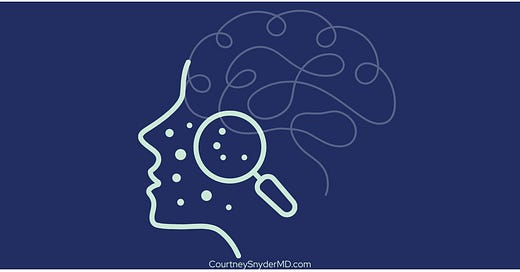What Skin Symptoms Can Tell Us About Brain Symptoms
The Zinc Link, Skin Symptoms of Common "Roots" of Brain Symptoms, Acne Treatment & Thinking Holistically
Upgrade to paid to play voiceover
Skin conditions are common in those with brain-related conditions. Most of what you’ll find about this relationship, however, is the suggestion that one is causing the other. It is believed, for example, that the stress of having a skin condition can cause depression and anxiety, which makes sense…..or that the stress of the mental health condition i…




